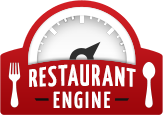Restaurant Owners Prepare for Mother’s Day, Examine Fees

Last year, a National Restaurant Association survey claimed that 87 million Americans planned to dine out on Mother’s Day. Due to coronavirus disease 2019 (COVID-19) infecting more than 1.17 million people in the U.S. and causing approximately 68,000 deaths, families will have to act creatively this coming Sunday. Whether they order to-go for family members in different households or just for their own mothers, dining-in will be the new normal this Mother’s Day.
Restaurant owners are certainly facing a drastically different environment versus prior years. More dependent on third-party delivery services than ever before, apps like GrubHub, DoorDash, Postmates and UberEats may be hurting more than helping. The problem is the fee structure.
Using GrubHub’s example of a taco restaurant order, the subtotal for a two-person order could be $41 with sales tax at $3.28 for a total of $44.28. However, GrubHub prepaid orders charge a 20% marketing commission (higher exposure on the website), plus a 10% delivery commission, a processing fee of 3.05% and an additional $0.30. Restaurants who use the “Pay Me Now Fee” for same-day earnings are charged a $1 transaction fee, even if it takes three to four additional business days to receive funds. Various other fees such as adjustments, equipment rental and chargebacks can add up to more than 50% of revenue in fees for some merchants.
While third-party companies may have been able to advertise some of these companies pre-closure to a larger consumer base, depending on the restaurant, some simply cannot afford any extra expenses right now. According to the National Restaurant Association, 3% of restaurants have permanently closed due to COVID-19, 44% have temporarily closed and 11% are deliberating their decision about whether they will close for good.
Restaurants are slowly reopening during the month of May. Many restaurant owners are encouraging customers to order directly from them as opposed to these third-party apps.
Restaurants on Shaky Ground, Mobile Apps or Not
The coronavirus outbreak has taken unemployment to 4.4%, according to the U.S. Bureau of Labor Statistics, and as high as 16%, according to the median estimate of economists surveyed by Bloomberg. Every penny counts for today’s restaurant owners, and likewise for consumers. The higher the initial ticket price, the less likely consumers are to press the buy button.
Employment in leisure and hospitality locations has already fallen by 459,000, primarily in food services and drinking locations. Total job losses in the restaurant industry nationwide total 8 million, according to the National Restaurant Association. With fewer consumers willing to pay for food deliveries, restaurants are left scrambling to pay their remaining employees.
However, for customers who are trying to get back into their normal (or special) routines, popular sit-down restaurants are trying their best. Cheesecake Factory has an order option for curbside to-go. Following strict COVID-19 safety requirements, the outermost package is sealed so there is no contact with the food from the kitchen to the door. Wrapped utensils can be declined altogether.
Other chain restaurants offering to-go orders and strict sanitary practices include Olive Garden, Red Lobster, Applebee’s and TGI Friday’s. Even after social isolation requirements have loosened this month, other dine-in restaurants such as Dave & Busters are still largely not opening in major metropolitan areas such as San Francisco, Chicago, Los Angeles or New York City. Consumers should check ahead of time for upcoming orders to make sure their restaurants will be open at all, or serve meals during holidays like Mother’s Day.
Even with 54% of restaurant operators providing off-premises service in March, as mandatory social isolation has become more common, major business changes were enforced, including 70% of restaurant operators who had to lay off employees and reduce work hours. Additional layoffs and hourly reductions continued in April while restaurant owners limited their menus and preparation hours. They also reduced delivery hours, with or without a third-party courier.
Is the Bigger Issue App Fees, or Evolving Customer Attitudes?
Curbside delivery and in-house delivery is on an uptick versus sit-down options. Yet lower-earning restaurants are still depending on a consumer base that has also lost disposable income. Mother’s Day and other special occasions may create a temporary earnings boost, but then what?
Overall, Americans are still rationing their spending in noticeable ways. In a survey from management consulting firm L.E.K. Consulting, takeout and delivery orders fell 15% while non-perishable and perishable groceries rose 15%. For an industry that depends on Americans opting out of cooking at home and ordering food delivery, third-party couriers versus curbside pick-up may not make much of a difference until consumers become confident in their own finances.
Photo by chuttersnap on Unsplash


Leave a Reply